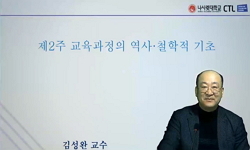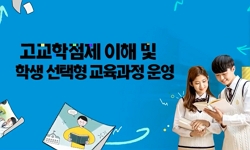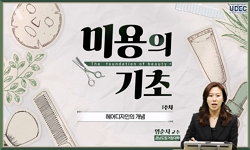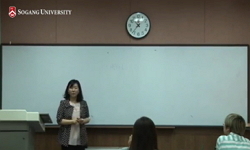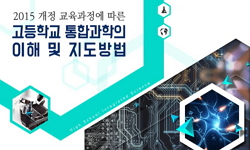The curriculum in education has provided the key to determine the quality of education. The education based on this curriculum ensures the autonomy and diversity of education, but also it lays a foundation in which teachers can show off their autonom...
http://chineseinput.net/에서 pinyin(병음)방식으로 중국어를 변환할 수 있습니다.
변환된 중국어를 복사하여 사용하시면 됩니다.
- 中文 을 입력하시려면 zhongwen을 입력하시고 space를누르시면됩니다.
- 北京 을 입력하시려면 beijing을 입력하시고 space를 누르시면 됩니다.
미용관련 학제에 따른 교육과정 및 관련변인 비교 연구 = A Comparative Study on Curriculum and Related Variables in Beauty-Related Departments According to Educational System
한글로보기https://www.riss.kr/link?id=T12887994
- 저자
-
발행사항
서산 : 한서대학교 교육대학원, 2012
-
학위논문사항
학위논문(석사) -- 한서대학교 교육대학원 , 교육학과 , 20012. 8
-
발행연도
2012
-
작성언어
한국어
- 주제어
-
KDC
593.2 판사항(4)
-
발행국(도시)
충청남도
-
형태사항
84p p.: 삽도; 30 cm.
- 소장기관
-
0
상세조회 -
0
다운로드
부가정보
다국어 초록 (Multilingual Abstract)
The curriculum in education has provided the key to determine the quality of education.
The education based on this curriculum ensures the autonomy and diversity of education, but also it lays a foundation in which teachers can show off their autonomy and professionalism. Thus, teachers in practice should fully understand the functions and roles of such a curriculum, as well as recognizing the importance of educational curriculum. This study primarily aims at the current status of whole Beauty-related departments and variables in comparison, and subsequently, suggests how to seek for the distinctive and proper level in current Beauty-related departments, on the basis of the identification of the current status. The main issues in this study are divided into four categories below;
Firstly, analyzing two-year College and four-year University for the current distribution status in each province of Korea, secondly, analyzing the proportion between theory and practice in Major subjects, and credit rate in two-year College and four-year University.
Thirdly, the current curriculum of Beauty-related departments, finally, analyzing the variables of Beauty-related departments through questionnaire with them from 1stofMarchto25th. The method of analysis is based on SPSS version 12.0 and through this method, frequency analysis, cross-analysis, and t-test are implemented in relation to the subjects of this study. The results of this study come out below; Firstly, the regional comparison for current Beauty-related departments shows that Daejeon and Busan only have two-year College for Beauty, and Seoul has relatively low proportion of two-year College for Beauty(30%). On the other hand, with four-year institutions for Beauty, the highest proportion is occupied by GwangJu(44.4%), while Inchon, Daegu, Ulsan, and Jeju have the lowest proportion(0%). Furthermore, according to the each province, Kyŏngsang-do (20%) places at the top in two-year College and four-year University, whilst 2% of all of them for Beauty in Inchon and Busan are based on two-year system. Meanwhile, with four-year one, the highest proportion(18.5%) is taken by both Chungcheong-do and Cholla-do , but none of four-year university for Beauty was established in Incheon, Ulsan, Daegu and Jeju.
Secondly, for the comparative study of the educational system with Beauty, 15.2% of all subjects are general subjects in comparison with major ones, and four-year University more concern about general subjects than two-year College, indicating 20.3% in the former and 10.1% in the latter ones. On the other hand, the proportion of major subjects is evaluated to 84.8%, and two-year College(89.9%) have higher figure than four-year University(79.7%). It means that two-year College shows more focus on major subjects than four-year University, and vice versa on general subjects. More specifically, for the comparison between theory and practice in major subjects, all institutes for Beauty shows major theory consists 23.7% of all major subjects, and among this, two-year College has 21.3% and four-year University has 26.1%, which means that four-year University outweighs two-year one in major theory. Total major subjects in practice represents 76.3%, and two-year College(78.7%) show higher proportion than four-year one(73.9%) in this case. In addition, 29.6% of all major subjects in practice shows ‘Skin Care’, and slightly higher position is occupied by two-year College(29.6%) than four-year University(29.5%). Average proportion in ‘Hair Beauty’ is 24.5%, and two-year College(26.9%) have higher position than four-year one(22.1%). Additionally, for ‘Make-up’ in major subjects in practice, two-year College(23.7%) have also higher figure than four-year University(22.7%), while the average proportion of ‘Make-up’ subject in practice represents 23.4%. Finally, other major subjects in practice have 22.7% in average, and four-year University (25.5%) is higher than two-year College in this case(19.8%). Thirdly, in regard to the proportion for demand of major subjects in theory, statistically, there is a significant difference in ‘Beauty consultation and management’, Introduction in Beauty’, and ‘Beauty business’. According to each major subject, two-year and four-year institutes have different priority for the demand of major subjects in theory. However, Anatomy Physiology, Disinfection and infectious disease studies, Public health sciences, and Beauty & nutrition are considered important in both institutes. On the other hand, for the comparison with each major subject in practice, students in two-year College relatively highly demand for Hair-Cut, Up-style, Dyeing and bleaching, Hair and scalp care, Hair permanent, Shampoo and dry, Makeup, Beauty illustration, Special makeup, Art makeup, Body Painting, Field work, Graduation Exhibition, Coordination and Care Meridian compared with those in four-year University. Both two institutes consider Graduation exhibition, Body Painting and Reflexology as important major subjects in Practice, even if each institutes has different priority in the whole demand for practice. Fourthly, on the basis of questionnaire for the comparison of Beauty-related variables between two-year College and four-year University, interesting point in two-year College and four-year UniversityKyŏnggi-do. In addition, with the socio-economical background, The parents of students in two-year College have higher standard for the level of education and higher income than those of students in four-year University. As well as this, with Social psychological background, parents of students in four-year University have not only further expectation but also support children more than those of students in two-year College. And, for the previous background of current students in two-year and four-year institutes, those who have graduated from general high school, and who have experienced Beauty program and higher score
국문 초록 (Abstract)
미용관련학과 학제에 따른 교육과정 및 관련변인 비교 연구 교육과정은 학교 교육의 질을 결정하는 중요한 요소이다. 교육과정 중심 교육은 학교 교육의 자율성과 다양성을 확보하며, 교사...
미용관련학과 학제에 따른 교육과정 및 관련변인 비교 연구
교육과정은 학교 교육의 질을 결정하는 중요한 요소이다. 교육과정 중심 교육은 학교 교육의 자율성과 다양성을 확보하며, 교사의 자율성과 전문성을 발휘할 수 있도록 하는 기반이 된다. 그러므로 이러한 교육과정의 기능과 역할을 학교 현장에 있는 교사들이 이해하고, 교육과정의 중요성을 인식하는 것은 중요하다. 본 연구는 미용관련학과 학제별 교육과정에 관한 전반적인 현황 및 교육과정과 관련된 관련변인을 비교 연구함으로써 현재 미용관련학과 학제별 교육과정에 대한 현황을 파악하고 수준에 맞는 차별화된 학제별 교육과정의 발전적인 방향을 모색하기 위한 기초적 자료를 제시하는데 그 목적이 있다. 본 논문의 연구문제는 다음과 같다. 첫째, 미용관련학과의 지역별 개설 현황을 분석하고 학제별로 비교한다. 둘째, 미용관련학과 학제별 교양과목과 전공과목의 학점비율, 전공이론과목과 전공실습과목의 학점비율, 전공실습과목의 전공별 학점비율을 비교한다.
셋째, 전공이론과목과 전공실습과목에 대한 필요도를 학제별로 비교한다. 넷째, 미용관련학과 교육과정 관련변인을 개인배경변인, 학교배경변인, 학교인식배경변인, 학교생활변인으로 분류하고 학제별로 비교한다. 연구문제를 해결하기 위한 분석방법으로 SPSS version 12.0을 사용하여 연구문제와 관련하여 빈도분석, 교차분석 및 t 검정 등을 적용한 연구 결과는 다음과 같다.
첫째, 미용관련학과 지역별 현황 비교 분석은 전체 2년제 대학에 대한 미용관련학과 2년제 대학의 경우 대전 지역과 부산 지역이 100%로 가장 높은 비율을 나타냈고, 서울 지역이 30%로 낮은 비율을 나타냈다. 전체 4년제 대학에 대한 미용관련학과 4년제 대학의 경우 광주 지역이 44.4%로 가장 높은 비율을 나타냈고, 인천 지역, 대구 지역, 울산 지역, 제주 지역이 0%로 낮은 비율을 나타냈다. 미용관련학과 2년제 대학과 4년제 대학의 지역별 개설현황은 2년제 대학의 경우 경상 지역이 20%로 가장 높은 비율을 나타냈으며, 인천 지역, 제주 지역이 2%로 가장 낮은 비율을 나타났다. 미용관련학과 4년제 대학은 충정 지역, 전라 지역이 18.5%로 가장 높은 비율을 나타냈으며, 인천 지역, 대구 지역, 울산 지역, 제주 지역이 0%로 미용관련학과 4년제 대학의 개설이 없는 것으로 나타났다. 둘째, 미용관련학과 학제별 교육과정 비교 연구에서 학제별 교양과목과 전공과목의 학점 비율은 전체 미용관련학과 교양과목의 학점 비율은 15.2%로 나타났으며, 이 중 2년제 대학이 10.1%, 4년제 대학이 20.3%로 4년제 대학이 교양과목 학점의 비율이 더 높은 것으로 나타났다. 전공과목 학점의 비율은 84.8%로 나타났으며, 이 중 2년제 대학이 89.9%, 4년제 대학이 79.7%로 2년제 대학이 전공과목 학점의 비율이 더 높은 것으로 나타나 학제별 교양과목의 비율은 4년제 대학이 높은 반면 전공과목의 비율은 2년제 대학이 높게 편성되고 있음을 알 수 있다. 학제별 전공이론과목과 전공실습과목의 학점 비율에서 전체 미용관련학과 전공이론과목의 학점 비율은 23.7%로 나타났으며, 이 중 2년제 대학이 21.3%, 4년제 대학이 26.1%로 4년제 대학이 전공이론과목 학점의 비율이 더 높은 것으로 나타났다. 전체 미용관련학과 전공실습과목 학점의 비율은 76.3%로 나타났으며, 이 중 2년제 대학이 78.7%, 4년제 대학이 73.9%로 2년제 대학이 전공실습과목 학점의 비율이 더 높은 것으로 나타났다. 학제별 전공실습과목의 학점 비율은 전체 미용관련학과 피부미용 학점의 평균 비율은 29.6%로 나타났으며, 이 중 2년제 대학이 29.6%, 4년제 대학이 29.5%로 2년제 대학이 피부미용 학점의 비율이 더 높게 나타났다. 헤어미용 학점의 평균 비율은 24.5%로 나타났으며, 이 중 2년제 대학이 26.9%, 4년제 대학이 22.1%로 2년제 대학이 헤어미용 학점의 비율이 더 높게 나타났다. 메이크업 학점의 평균 비율은 23.4%로 이 중 2년제 대학이 23.7%, 4년제 대학이 23.0%로 2년제 대학이 메이크업 학점의 비율이 더 높게 나타났다. 기타 학점의 평균 비율은 22.7%로 이 중 2년제 대학이 19.8%, 4년제 대학이 25.5%로 4년제 대학이 기타 학점 학점의 비율이 더 높게 나타났다.
셋째, 미용관련학과 학제별 전공과목 필요도에서 학제별 전공이론과목 필요도 비교는 통계적으로 유의한 차이가 있는 교과목 중 피부과학, 모발과학, 색채학, 공중보건학, 미용상담및경영, 미용학개론, 미용경영학, 화장품학은 2년제 대학 재학생이 4년제 대학 재학생보다 요구도가 높은 과목으로 나타났다. 학제에 따라 전공이론과목으로 필요하다고 생각하는 순위는 달랐으나 두 집단 모두 해부생리학, 소독법및전염병학, 공중보건학, 미용영양학이 중요한 것으로 나타났다. 학제별 전공실습과목 필요도 비교는 통계적으로 유의한 차이가 있는 교과목 중 헤어커트, 업스타일, 염색및탈색, 모발및두피관리, 헤어퍼머넌트, 샴푸및드라이, 메이크업, 뷰티일러스트레이션, 특수분장, 아트메이크업, 바디페인팅, 현장실습, 졸업작품전, 코디네이션, 미용경락은 2년제 대학 재학생이 4년제 대학 재학생보다 요구도가 높은 과목으로 나타났
목차 (Table of Contents)
- Ⅰ. 서 론 1
- 1. 연구의 필요성 및 목적 1
- 2. 연구 문제 5
- 3. 연구의 제한점 5
- Ⅱ. 이론적 배경 7
- Ⅰ. 서 론 1
- 1. 연구의 필요성 및 목적 1
- 2. 연구 문제 5
- 3. 연구의 제한점 5
- Ⅱ. 이론적 배경 7
- 1. 교육과정과 관련변인 7
- 2. 미용관련학과 2년제 대학의 교육과정 11
- 3. 미용관련학과 4년제 대학의 교육과정 13
- Ⅲ. 연구 방법 15
- 1. 연구대상15
- 2. 조사도구 18
- 3. 자료분류 21
- 4. 분석방법 21
- Ⅵ. 연구 결과 및 고찰 23
- 1. 미용관련학과 지역별 현황 23
- 1) 미용관련학과 2년제 대학의 지역별 현황 23
- 2) 미용관련학과 4년제 대학의 지역별 현황 24
- 3) 미용관련학과 2년제 대학과 4년제 대학의 지역별 현황 25
- 2. 미용관련학과 학제별 교육과정 비교 26
- 1) 학제별 교양과목과 전공과목의 학점 비율 26
- 2) 학제별 전공이론과목과 전공실습과목의 학점 비율 28
- 3) 학제별 전공실습과목의 전공별 학점 비율 30
- 4. 미용관련학과 학제별 전공과목 필요도 비교 분석 33
- 1) 미용관련학과 학제별 전공이론과목 필요도 33
- 2) 미용관련학과 학제별 전공실습과목 필요도 34
- 5. 미용관련학과 학제별 교육과정 관련변인 비교 분석 36
- 1) 연구대상의 인구통계학적 특성 36
- 2) 학제별 사회경제적 배경 비교 37
- 3) 학제별 사회심리적 배경 비교 39
- 4) 학제별 교육적 배경 비교 40
- 5) 학제별 입학 배경 비교 43
- 6) 학제별 교육환경 배경 비교 44
- 7) 학제별 교수 인식 배경 비교 45
- (1) 학제별 학과 지도교수 면담 정도 비교 45
- (2) 학제별 교수 인식 배경 비교 46
- 8) 학제별 입학 인식 배경 비교 47
- 9) 학제별 전공 인식 배경 비교 47
- 10) 학제별 교내활동 배경 비교 48
- (1) 학제별 학교 도서관 이용 정도 및 동아리 활동 여부 비교 48
- (2) 학제별 교내진로 프로그램 참석정도 및 학교 동문의미 부여정도 비교 50
- 11) 학제별 상담정도 배경 비교 51
- 12) 학제별 학적사항 배경 비교 52
- Ⅴ. 결론 및 제언 53
- 1. 결론 53
- 2. 제언 57
- 참고문헌 60
- ABSTRACT 65





